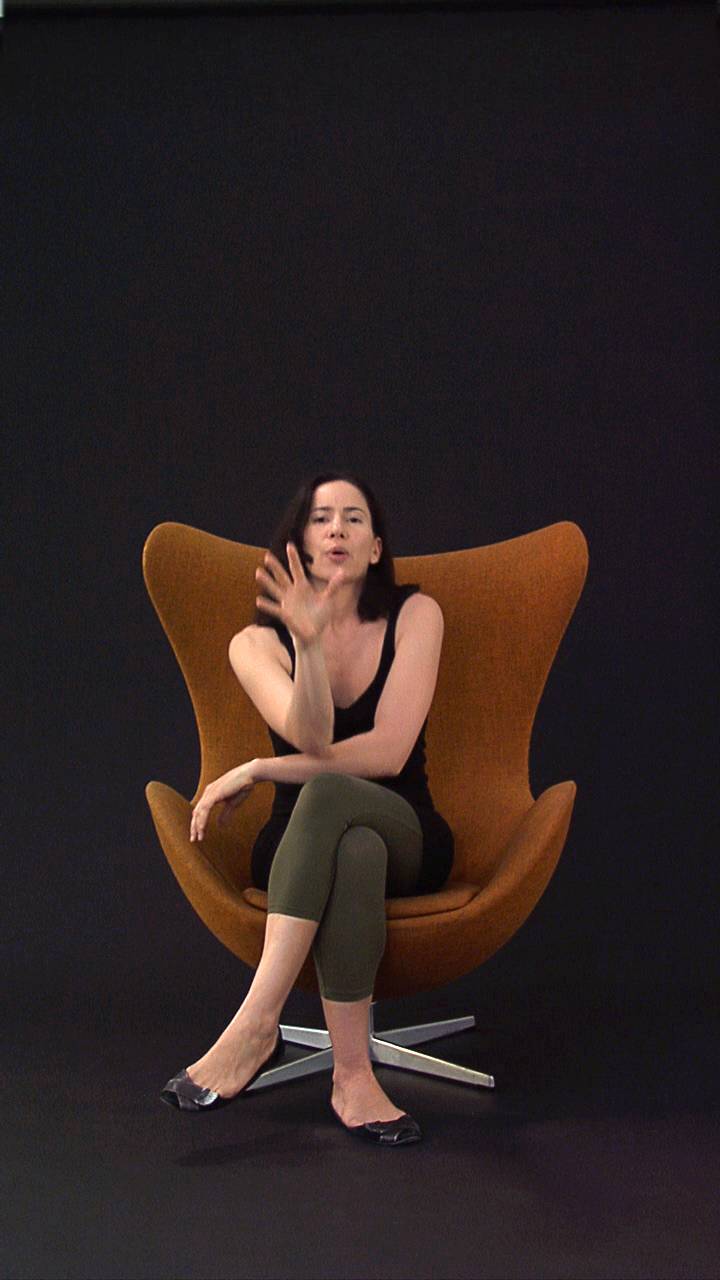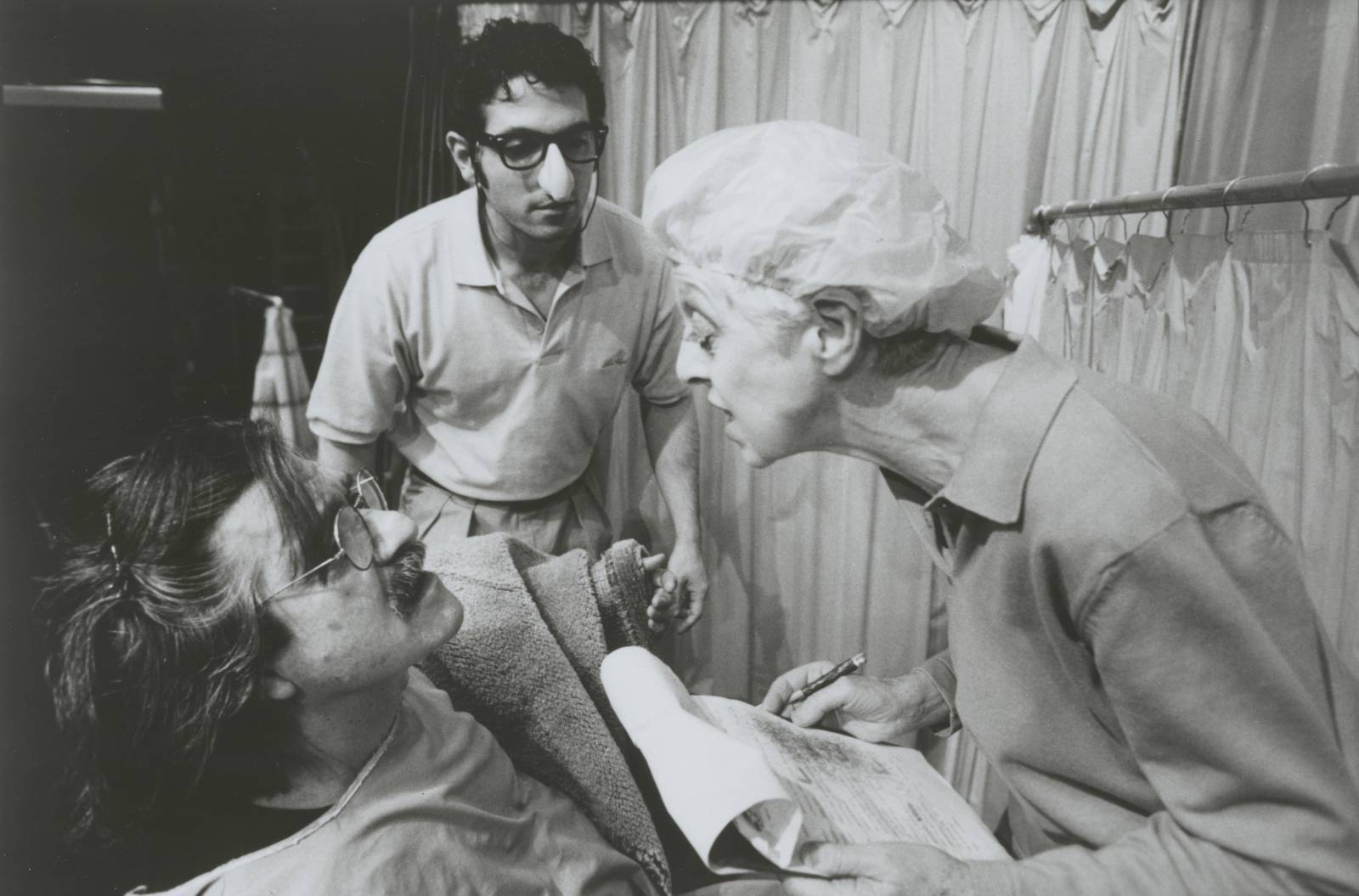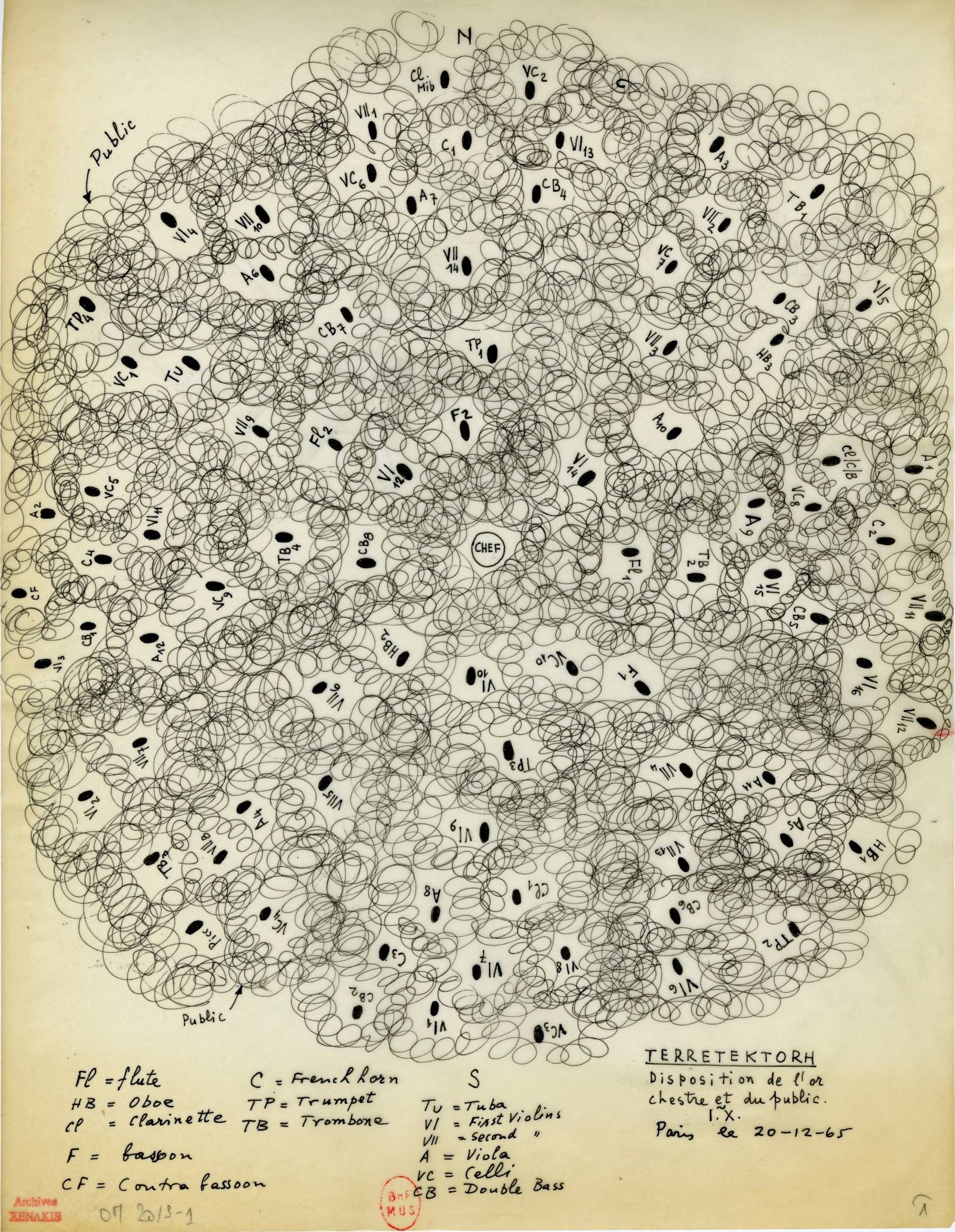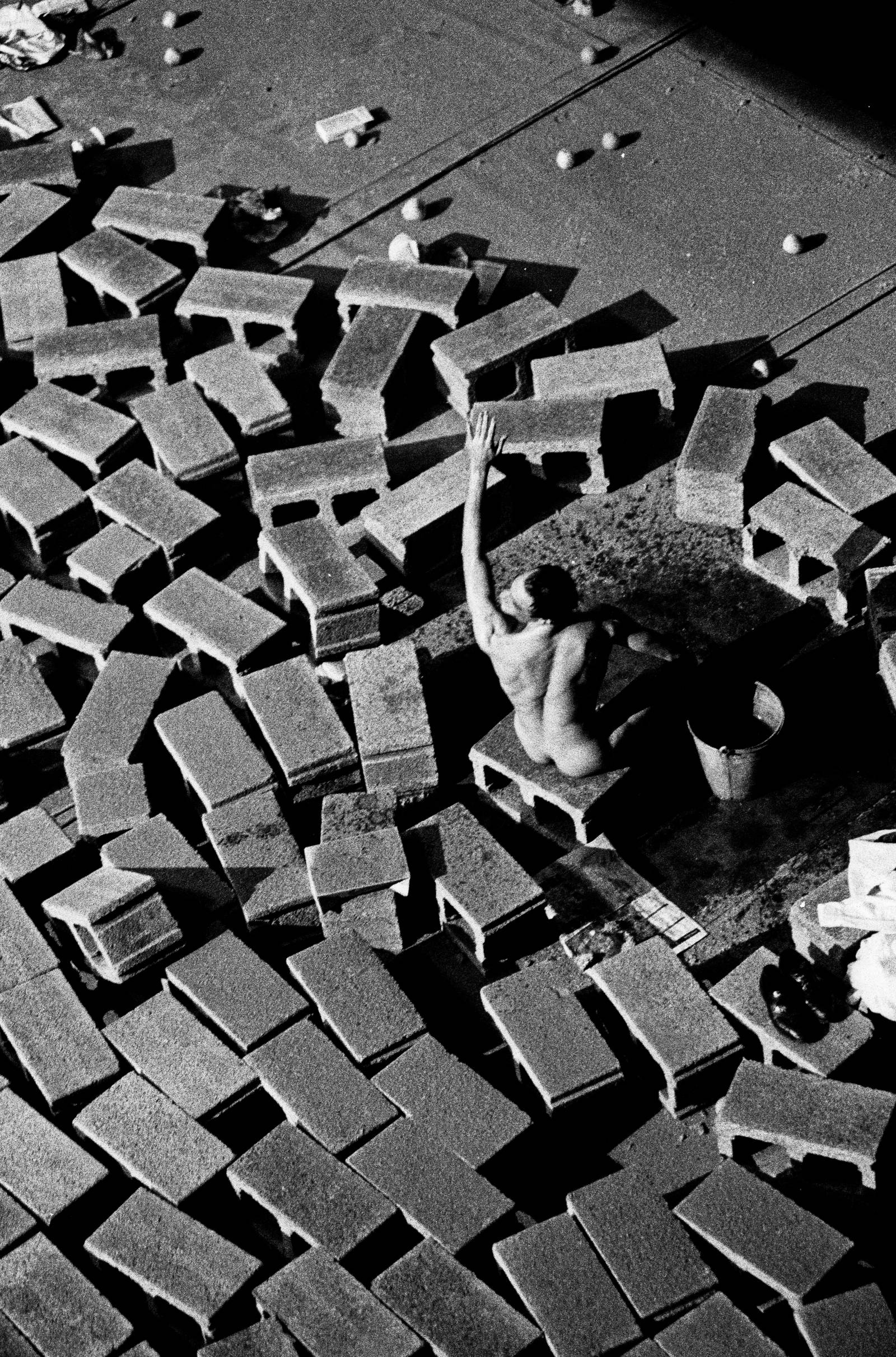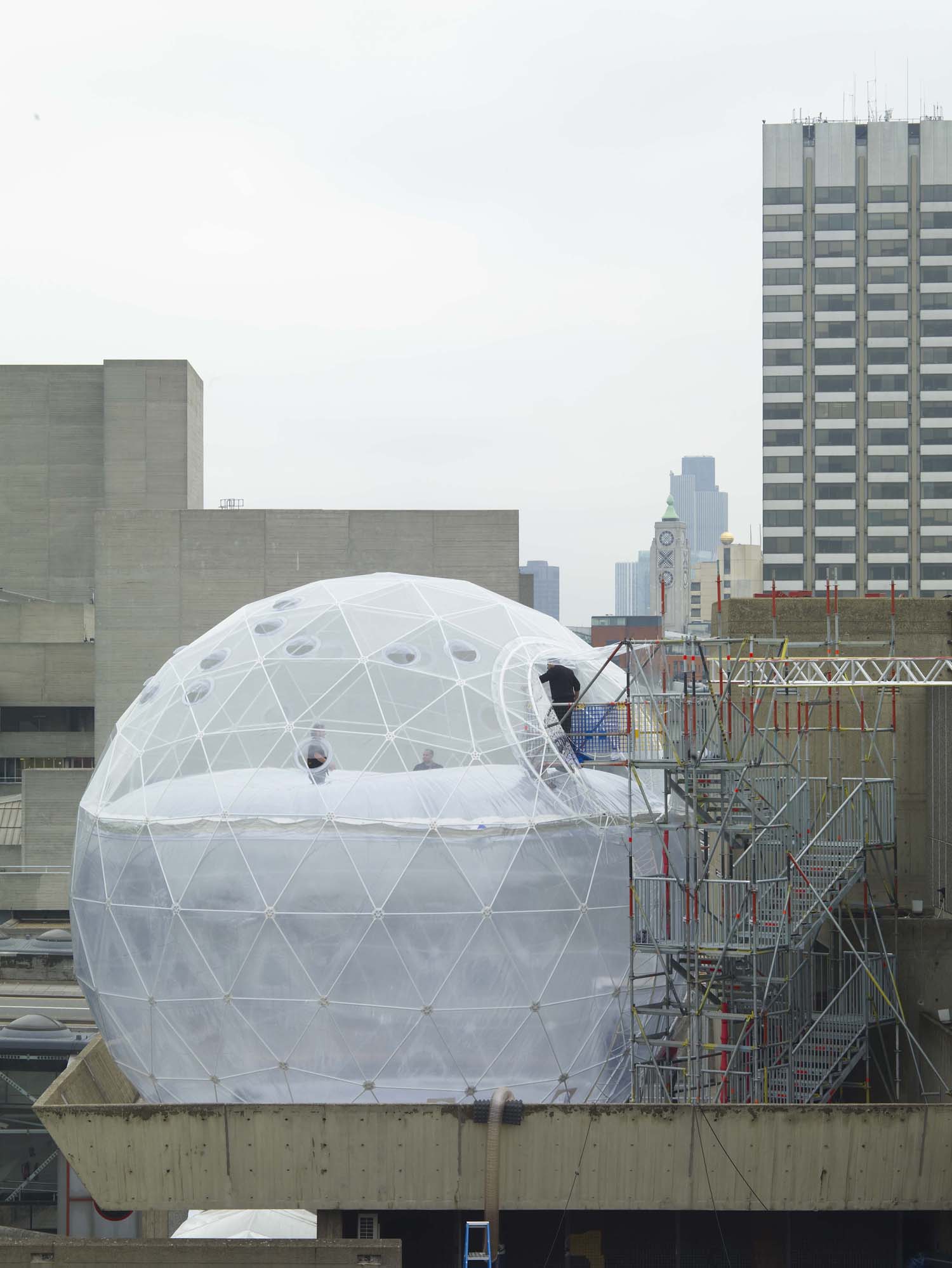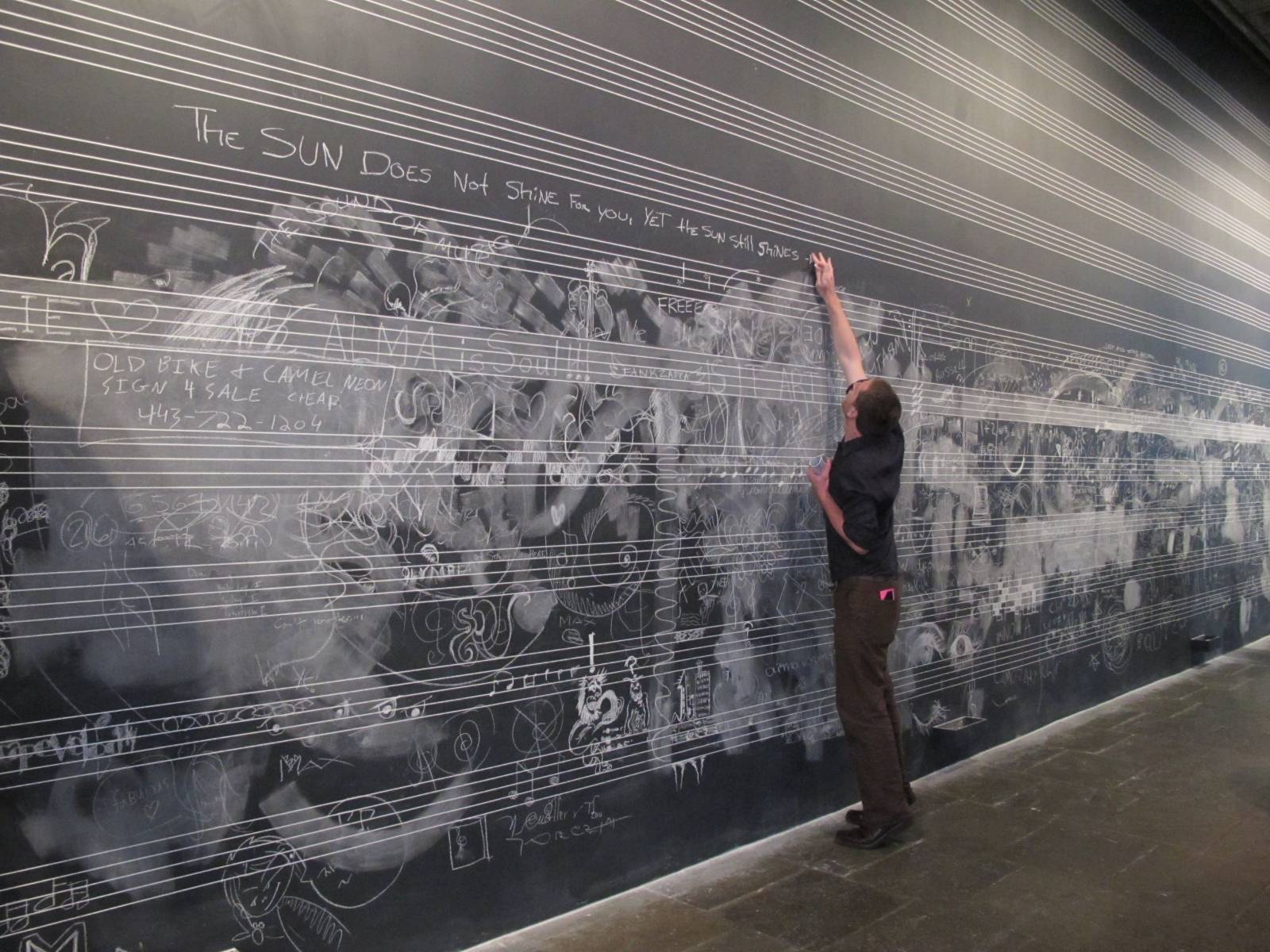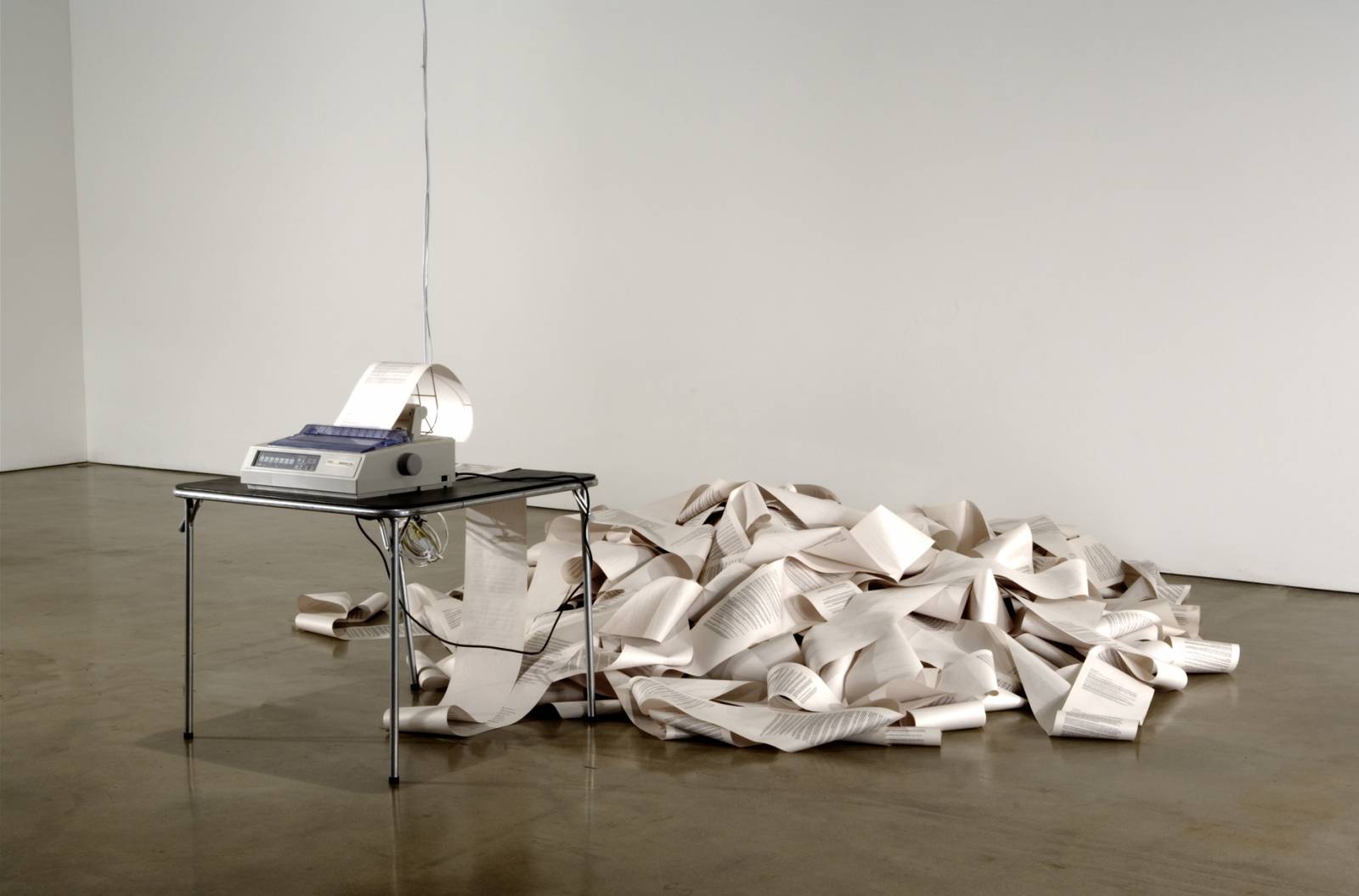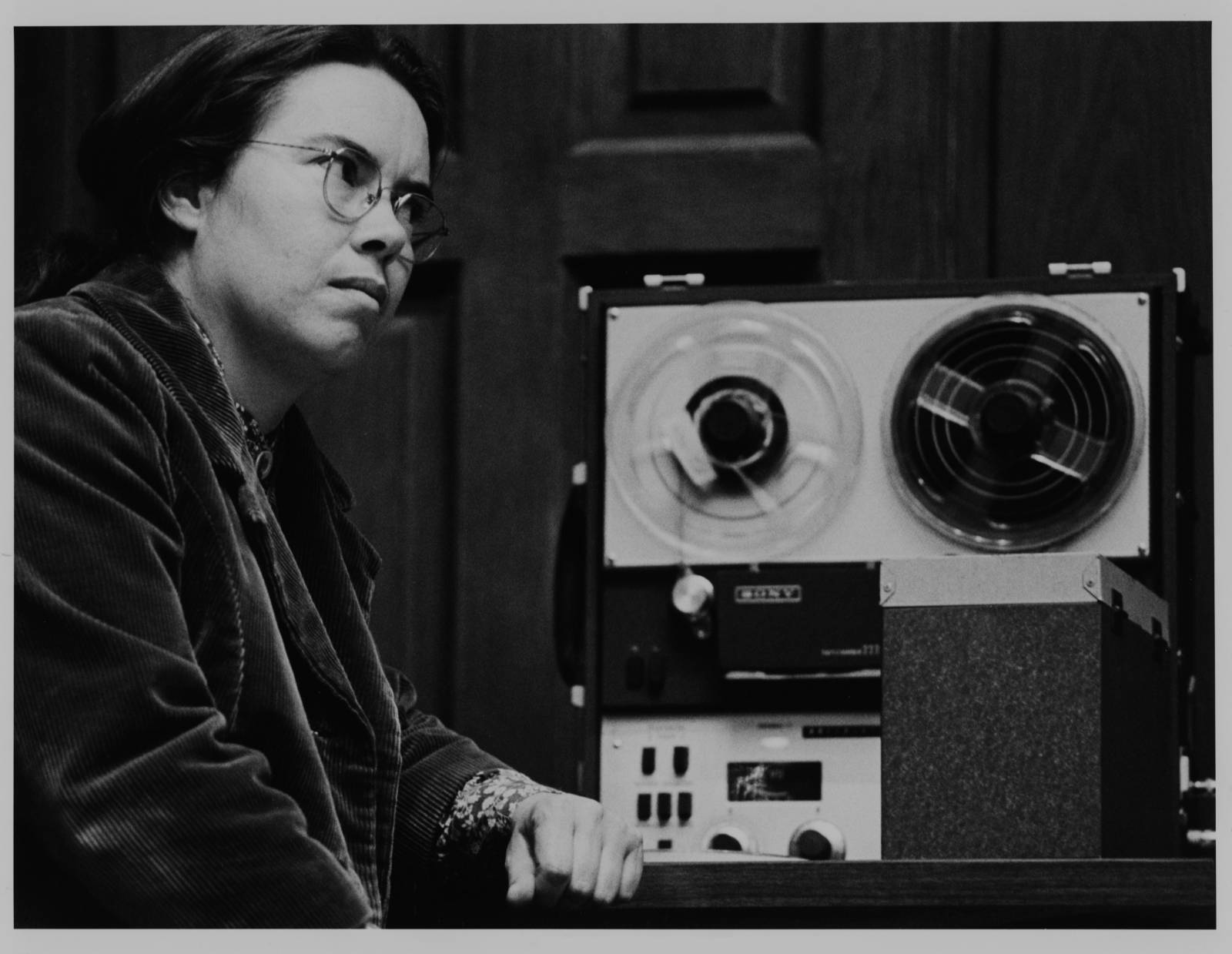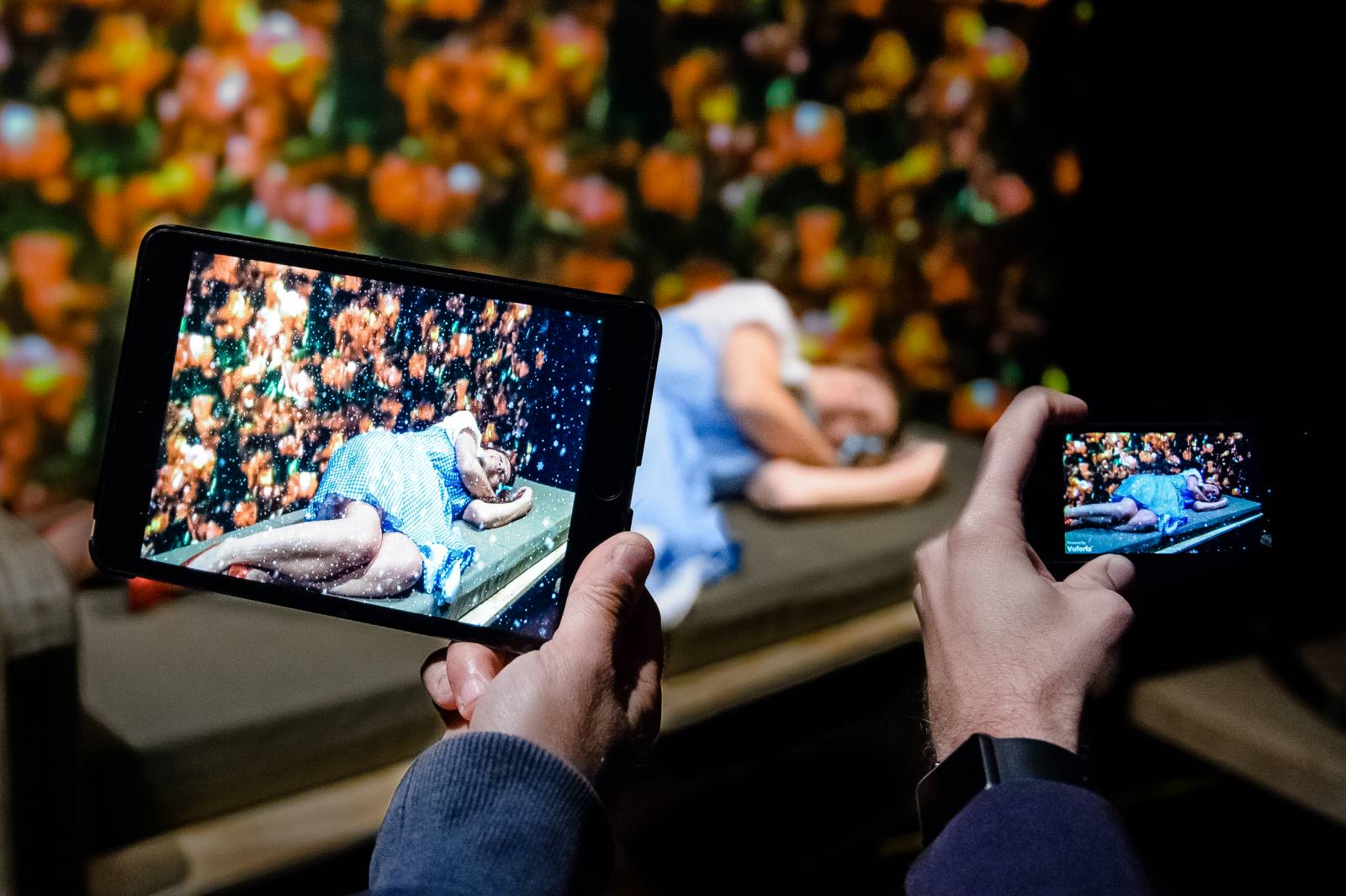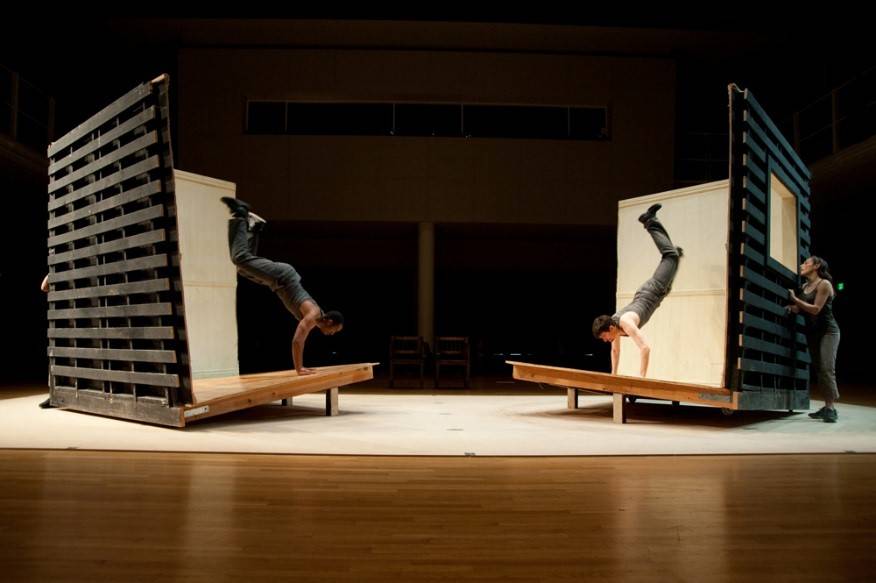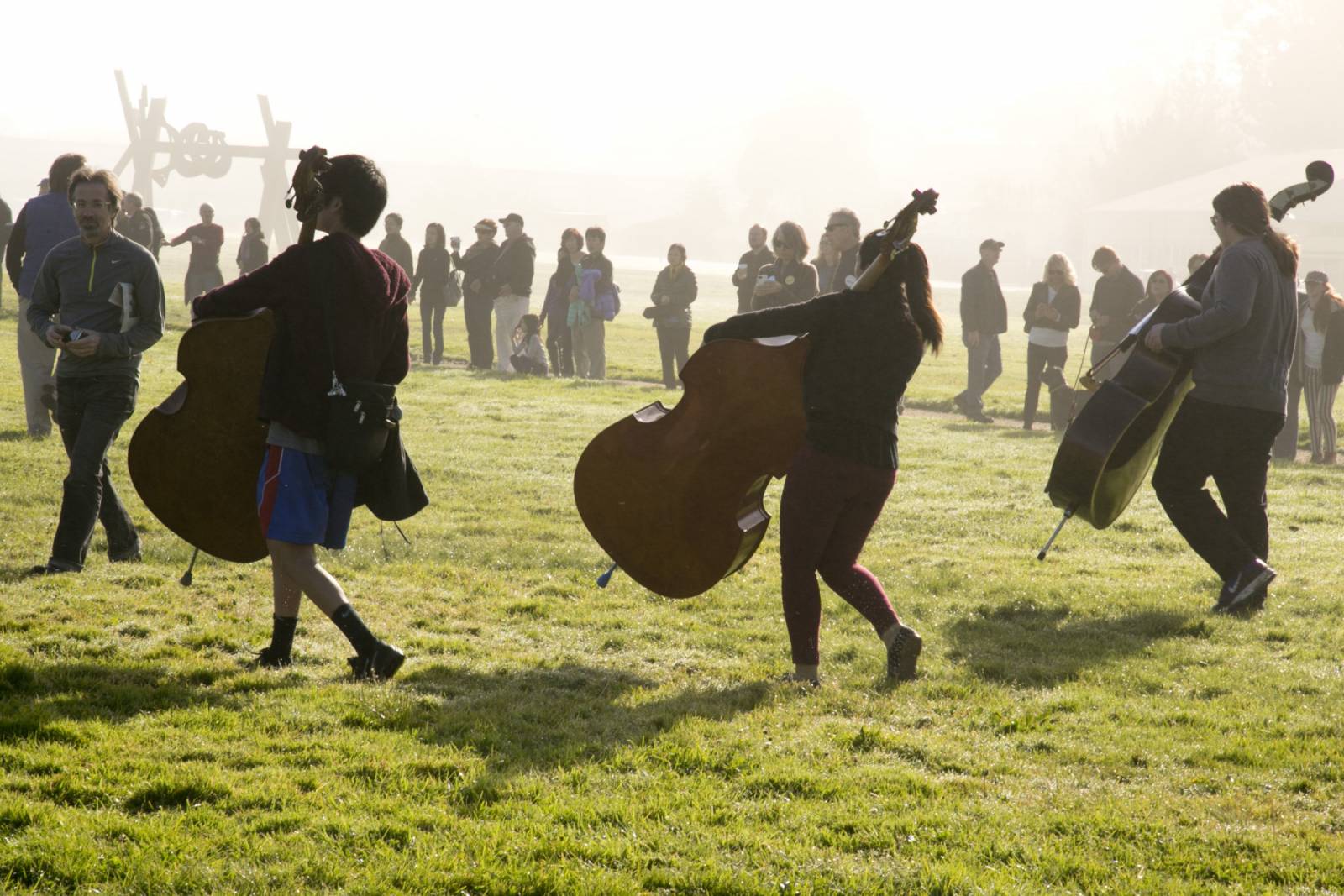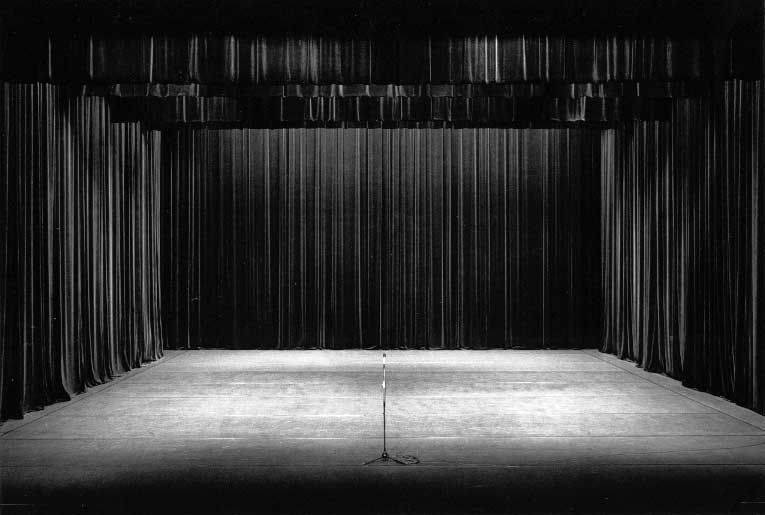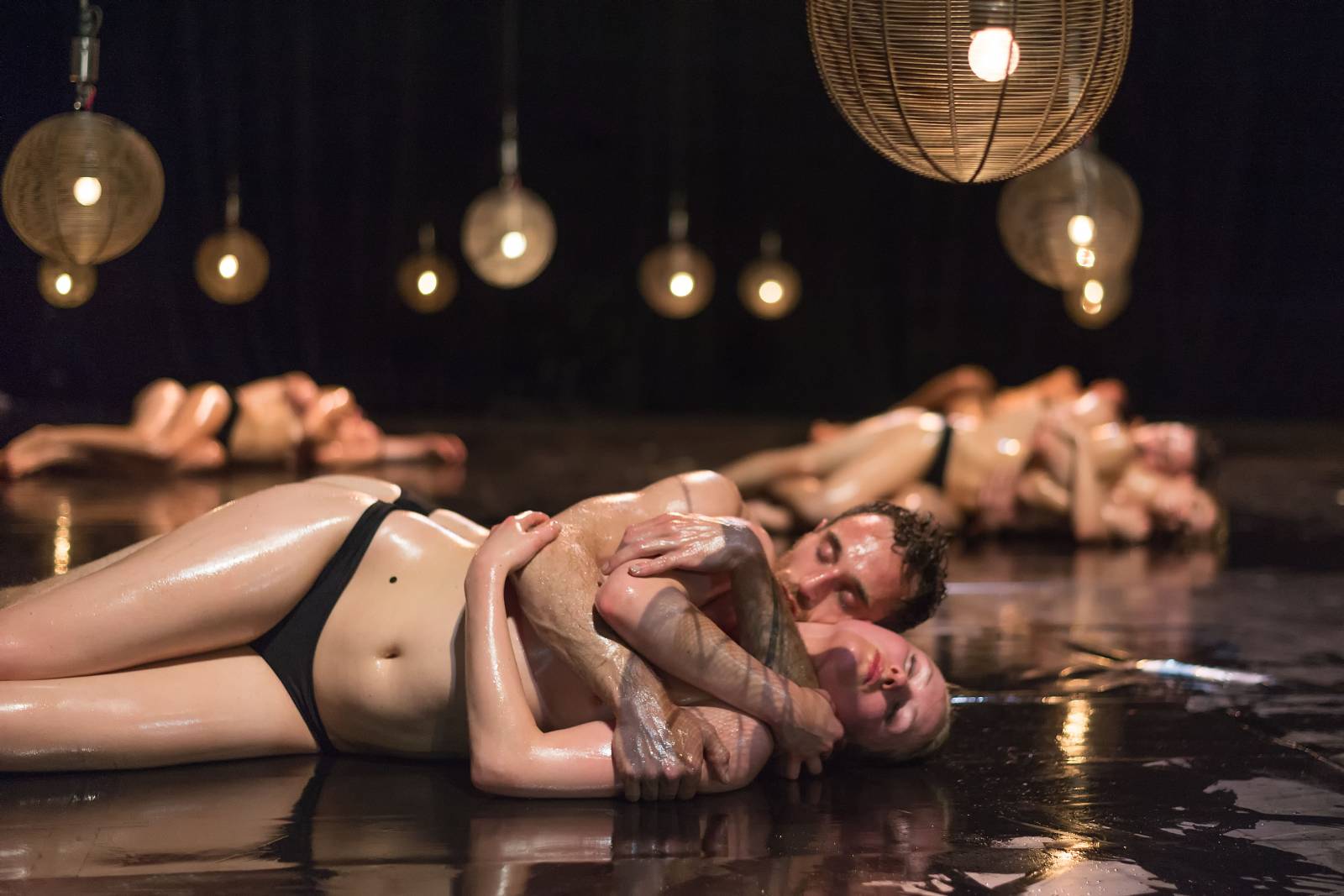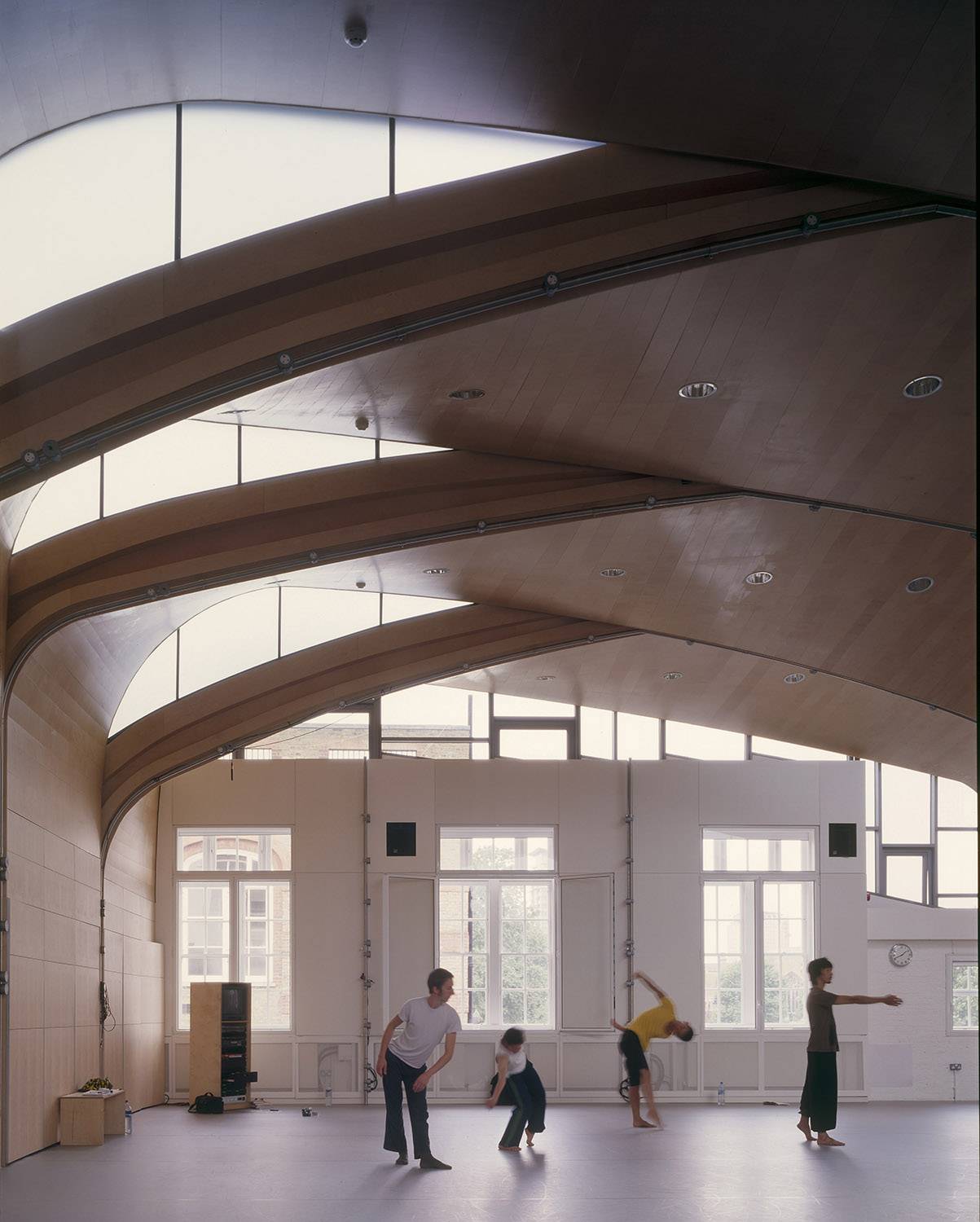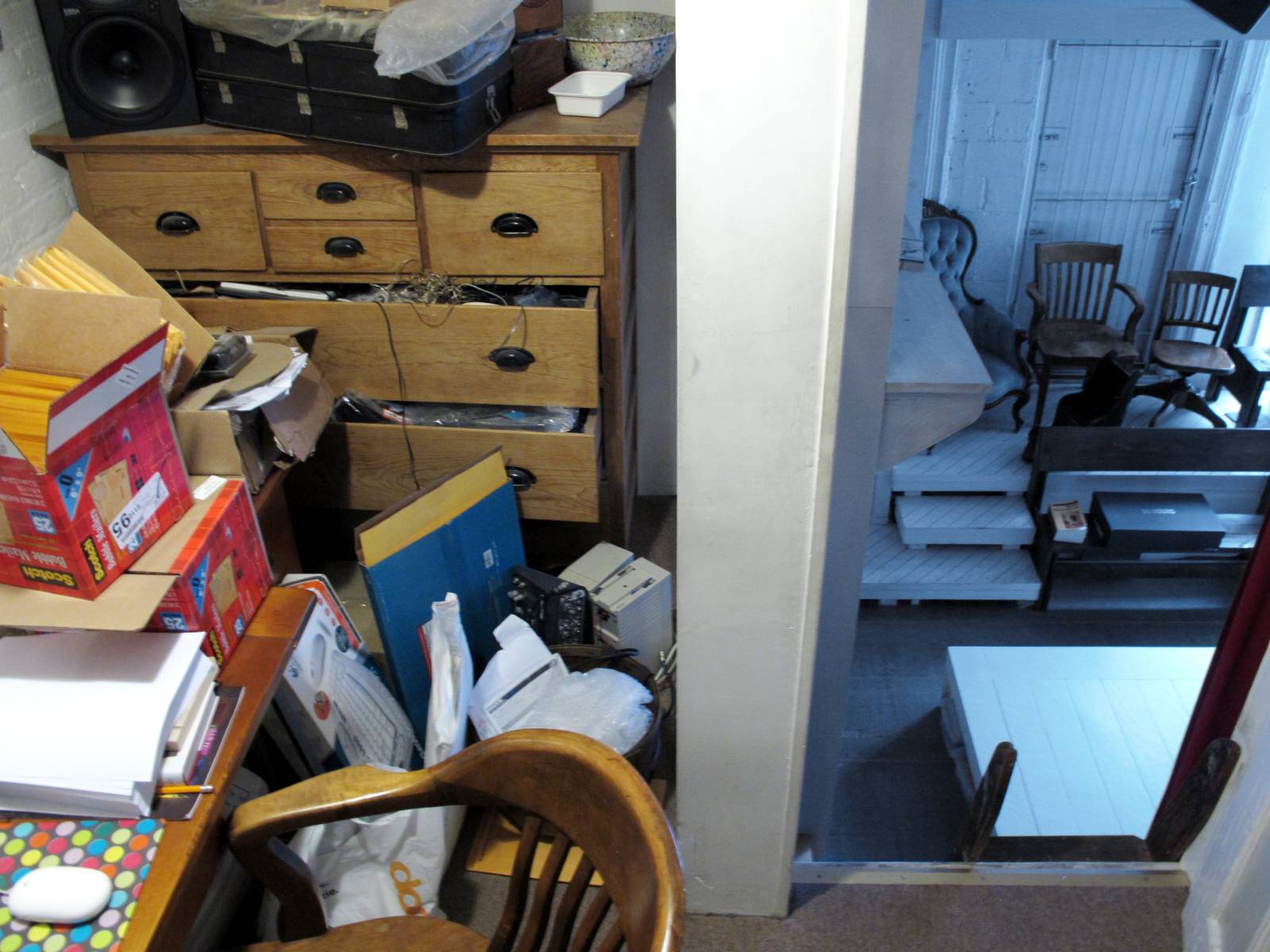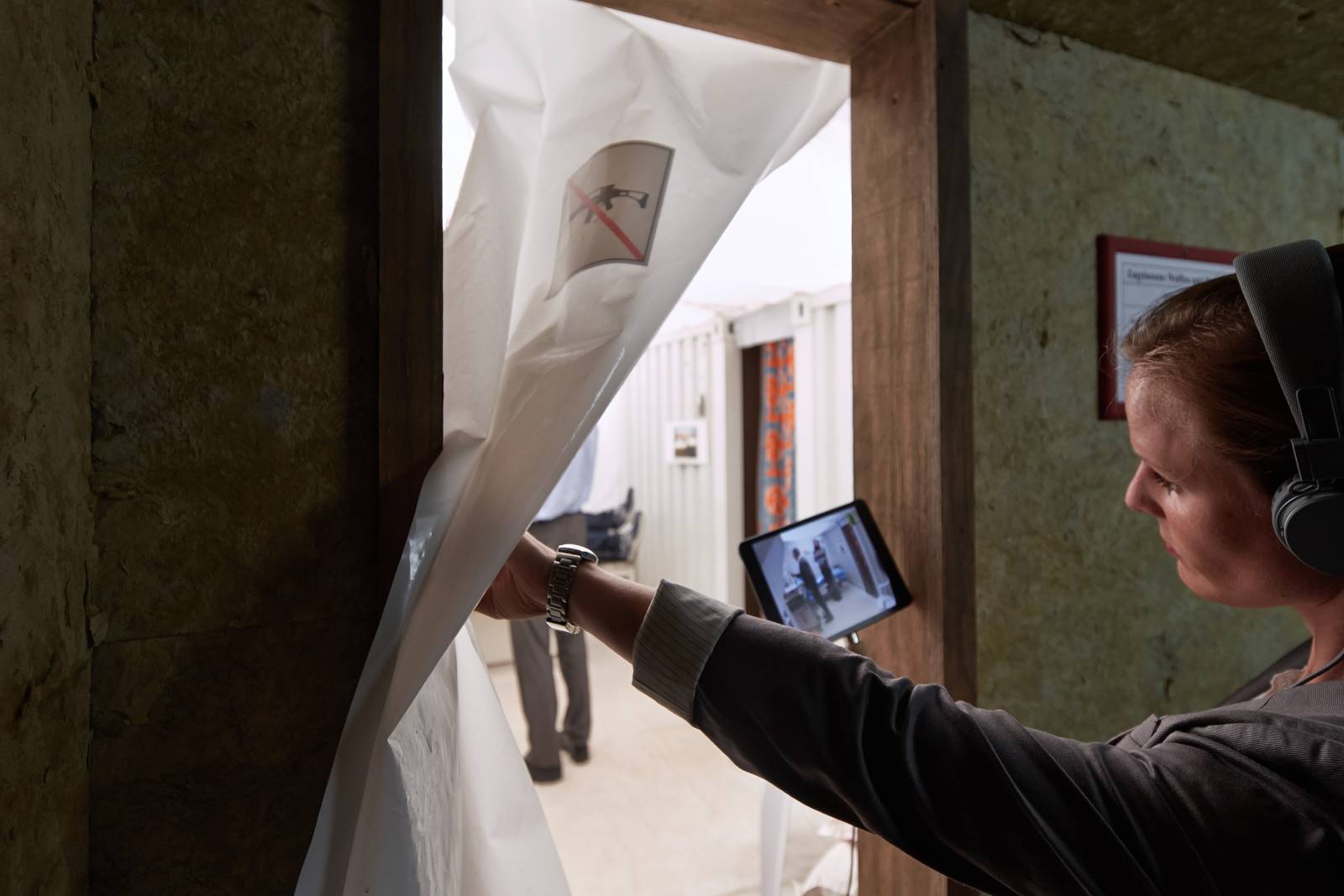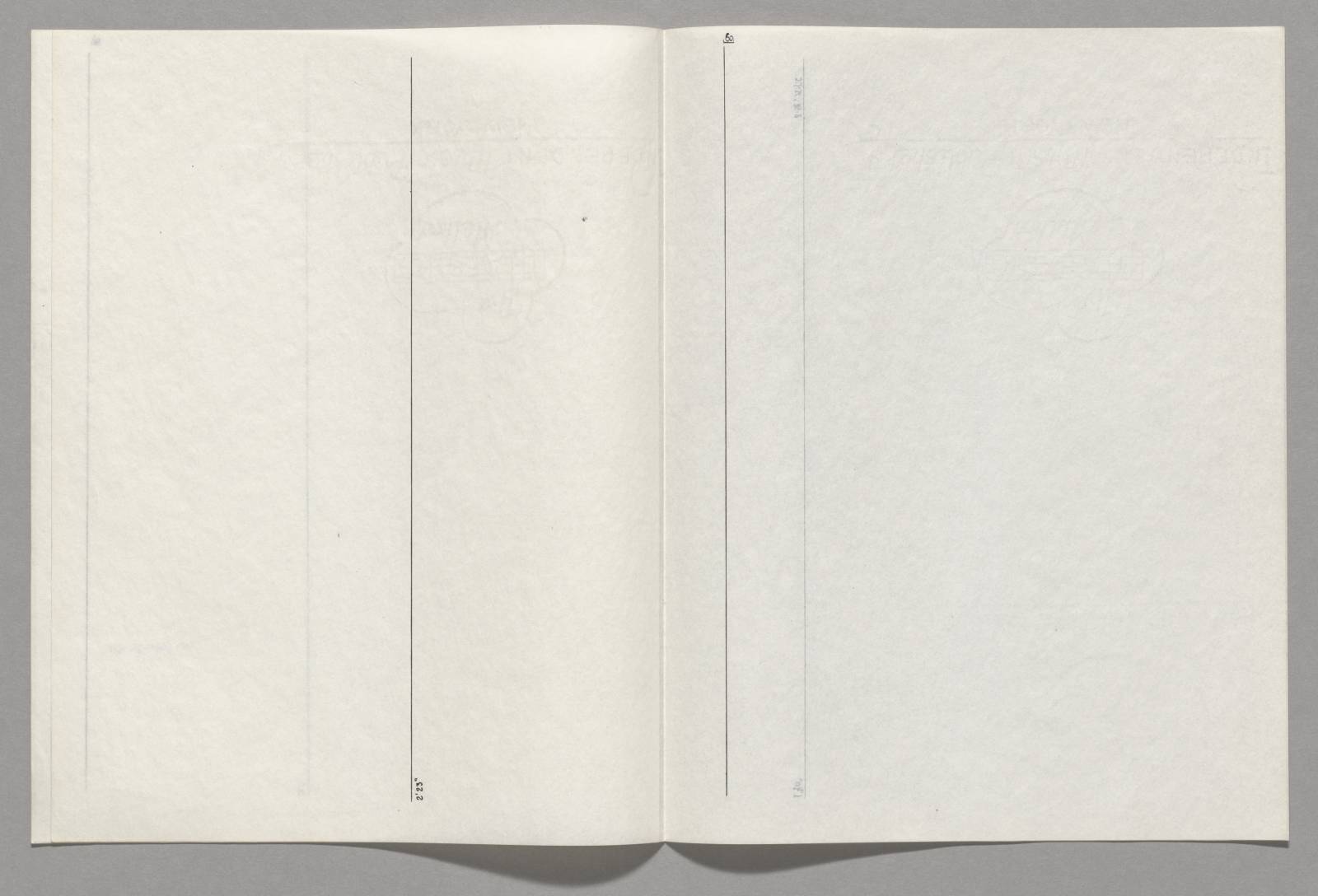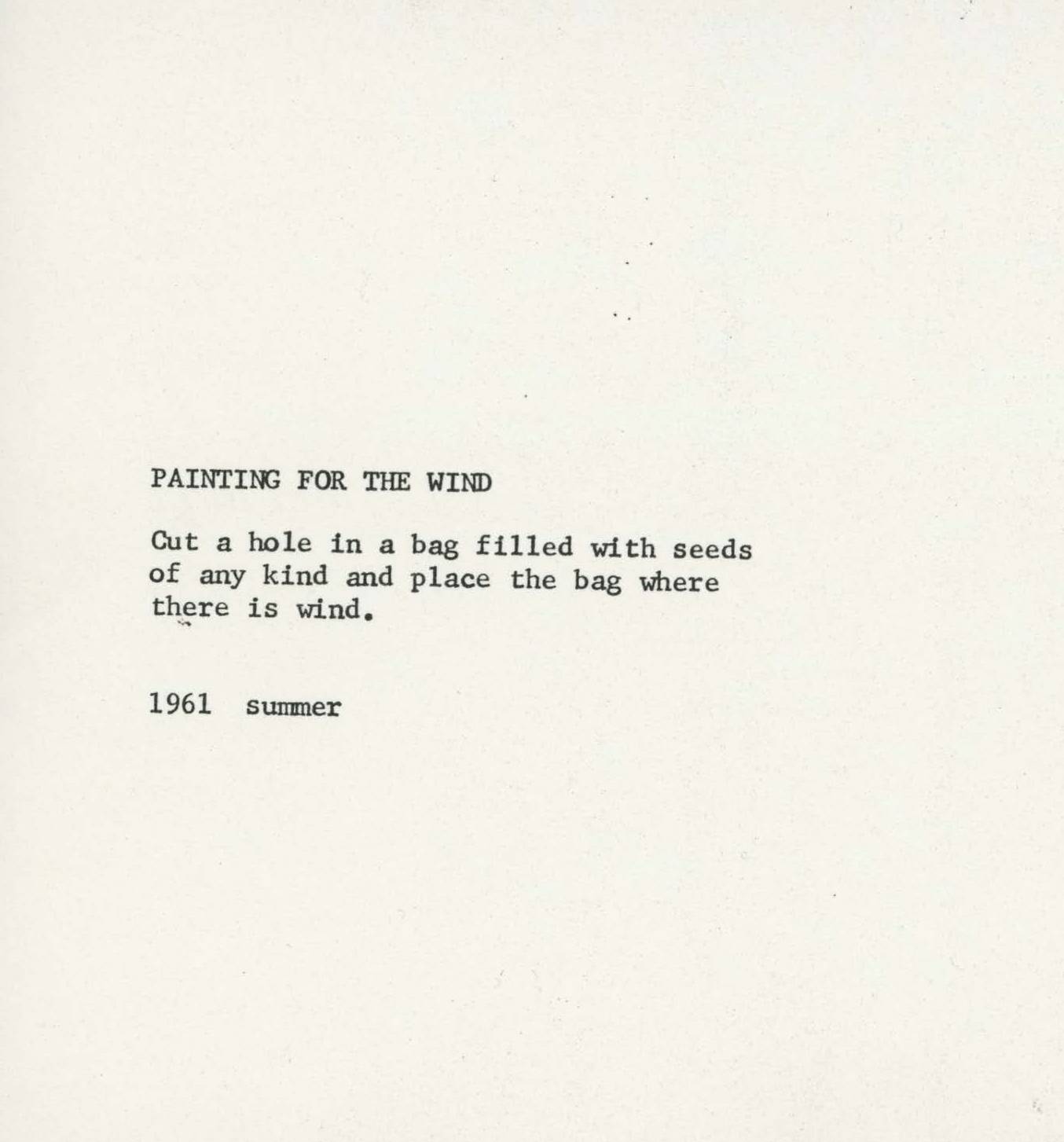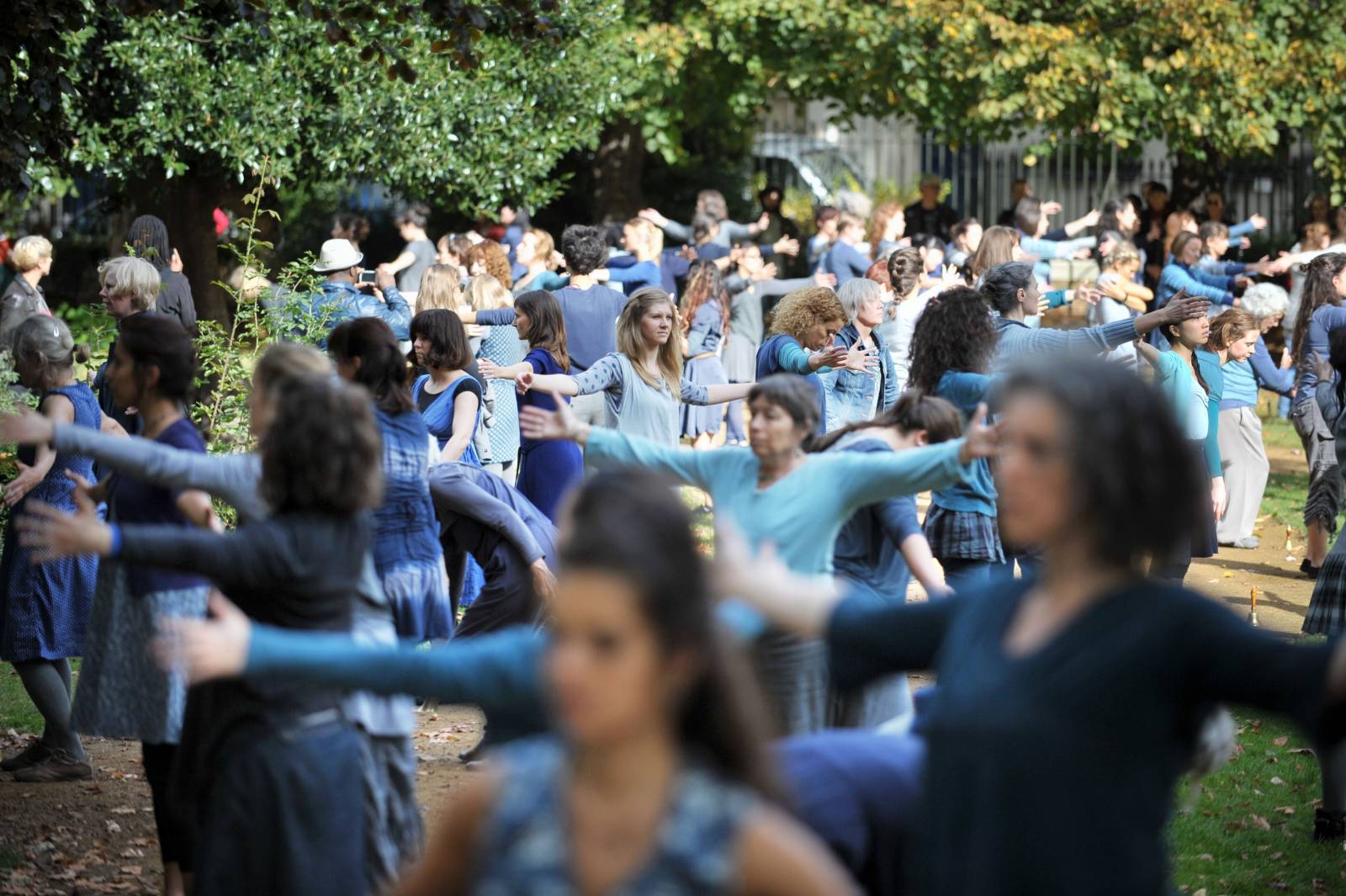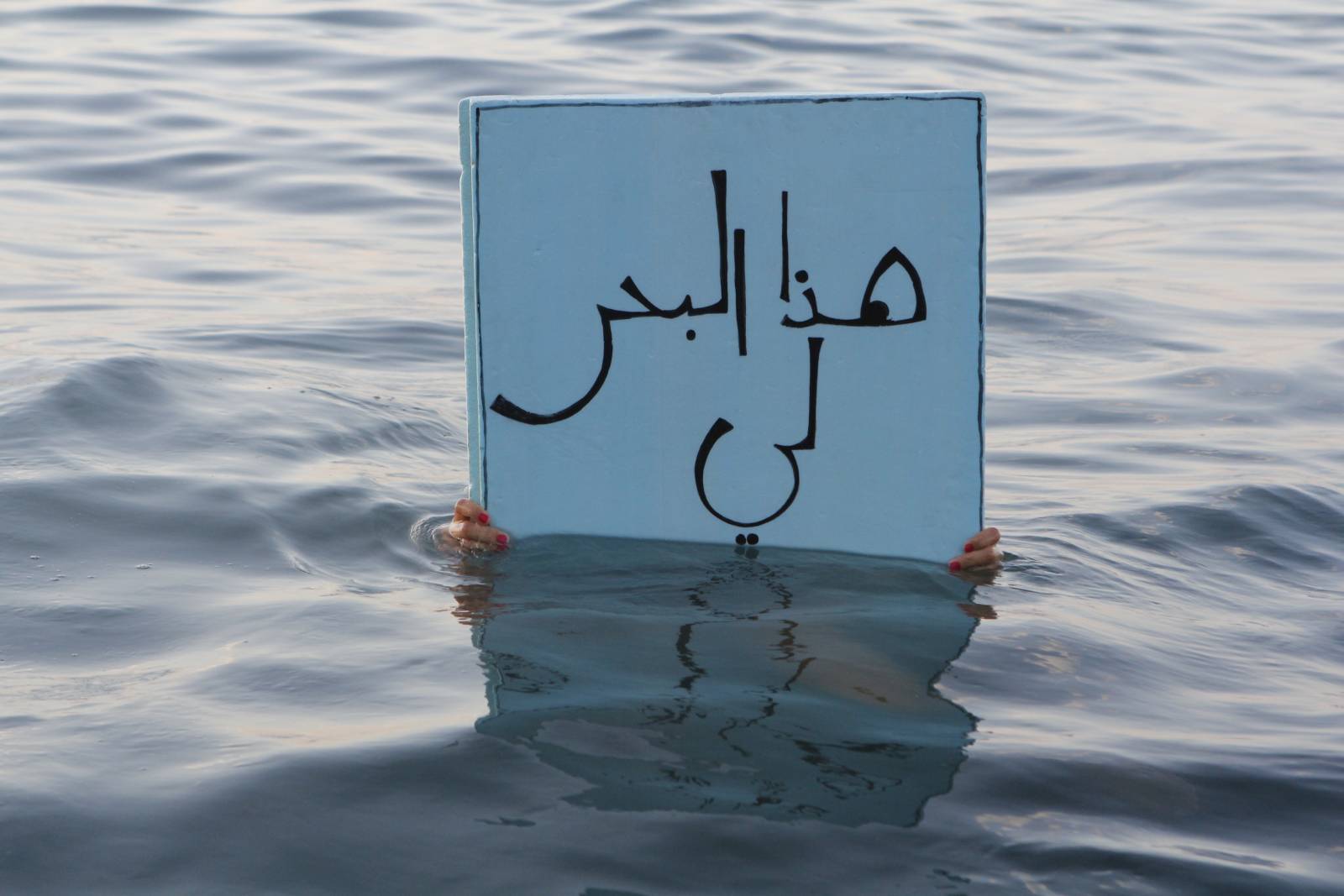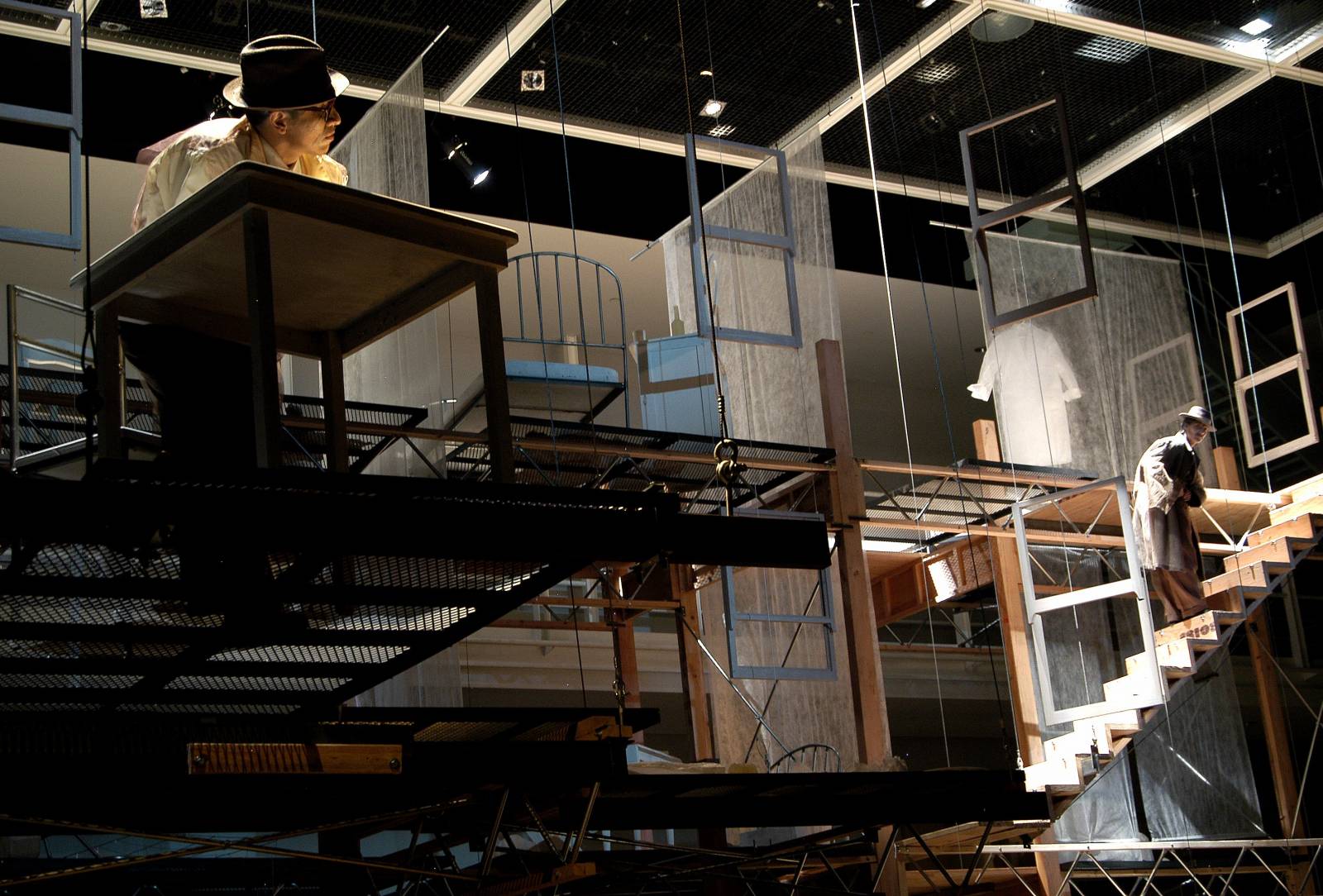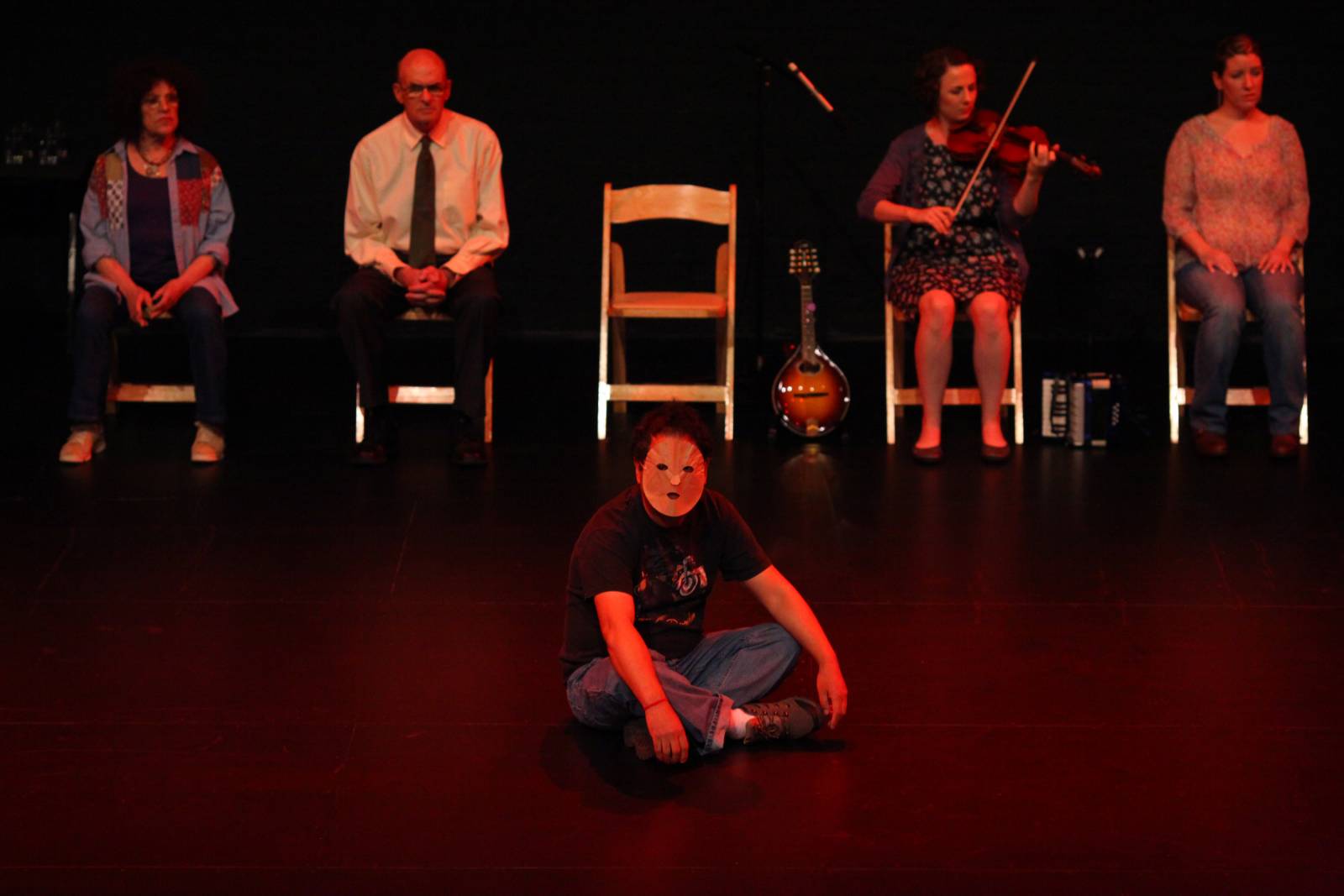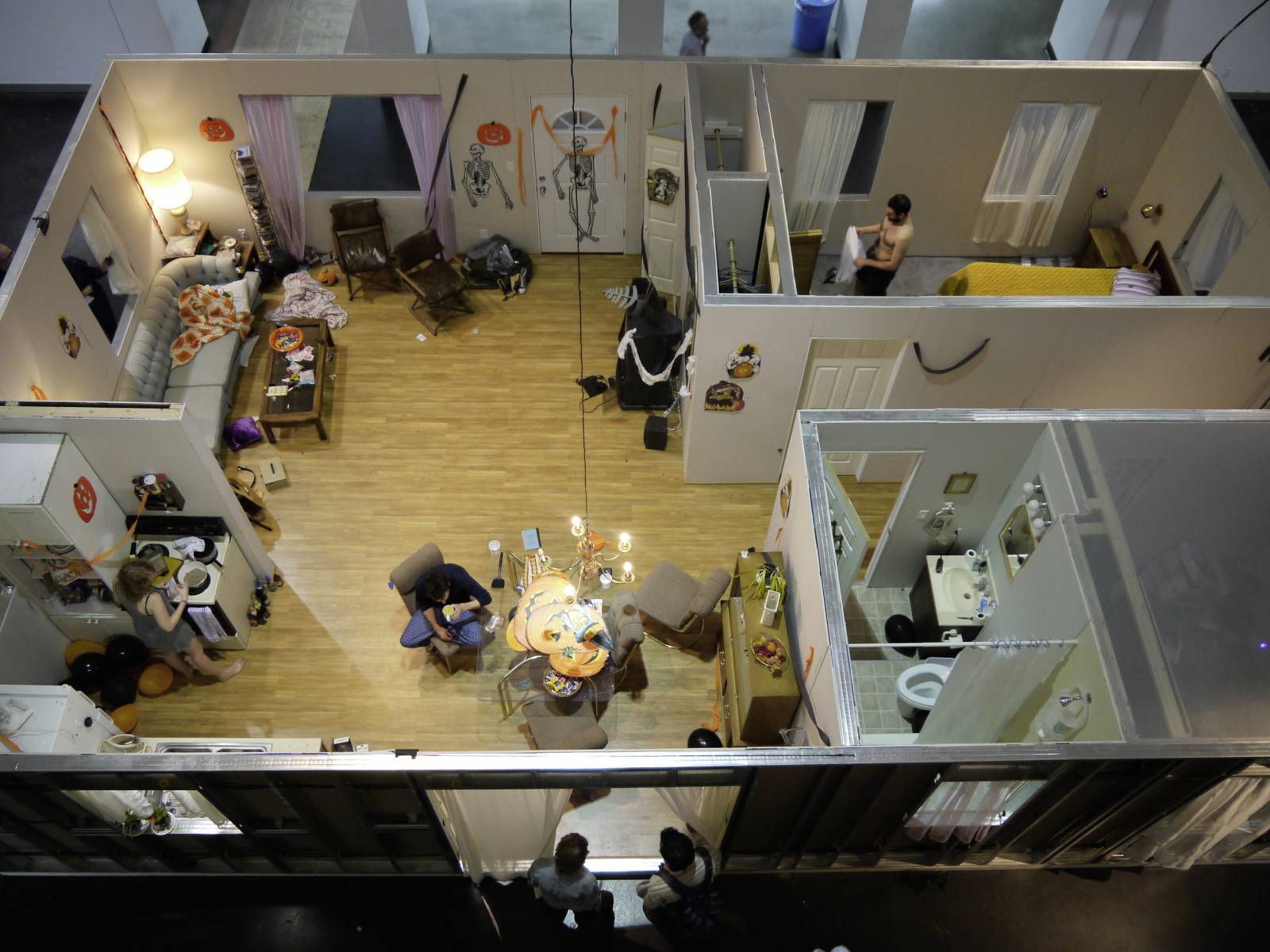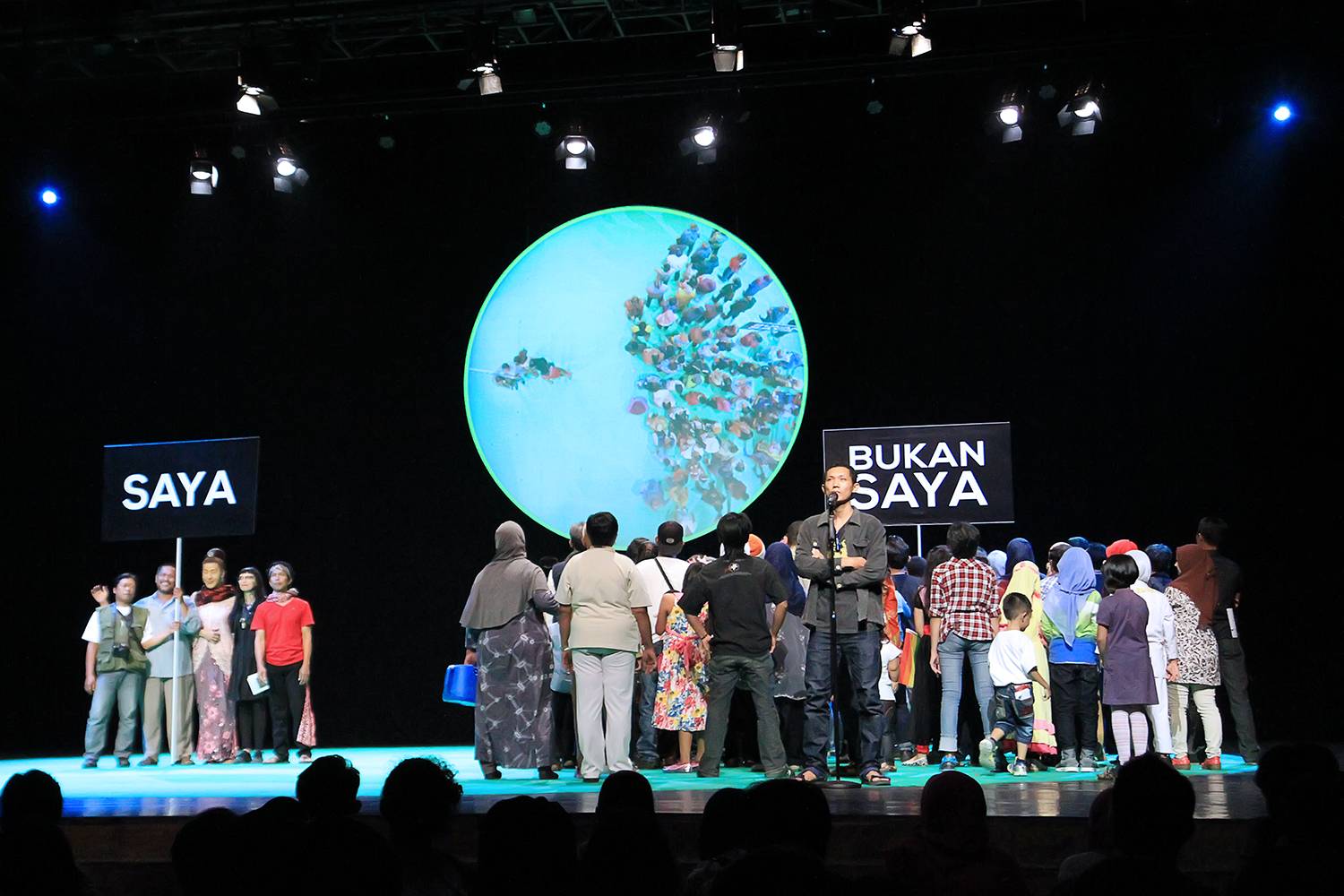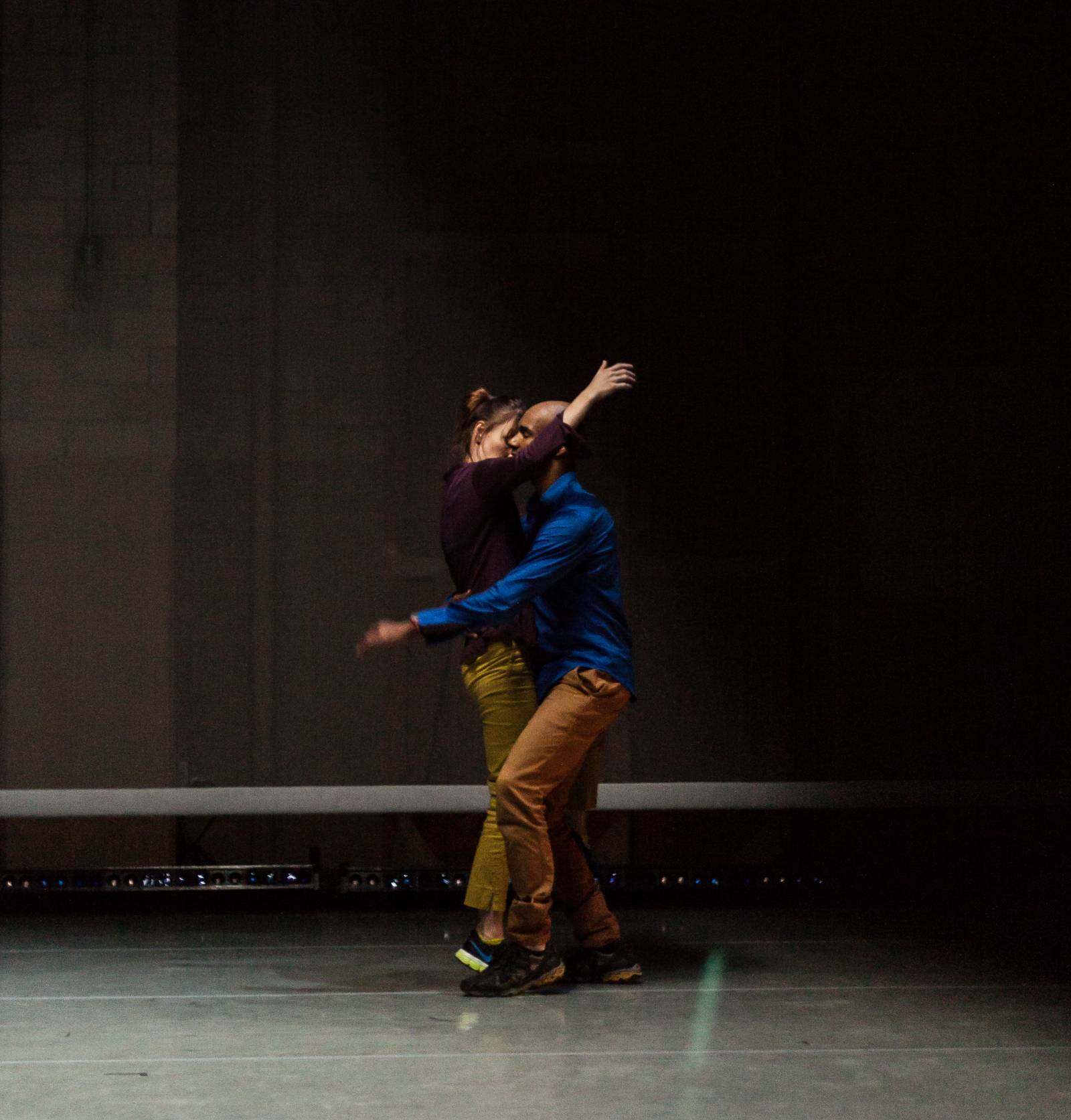Performativity (noun) is a representational apparatus produced through language, mimetic action, or another mode of signification, which, in the moment of utterance or presentation, enacts a social transformation or confirms a social condition. A performative (noun) is the particular piece of speech or action that performs such an enactment or confirmation. Performative (adjective) modifies concrete terms to instantiate change.
The noun performance indicates a set of disciplinary considerations in addition to action and speech, including movement, narrative, ritual, and spectacle. The etymology of performance combines Latin and French parts, transforming the verb—to perform—into an abstract noun that describes the state of thoroughly carrying into effect. The Old French word parfornir is a close relative, meaning to accomplish, completed by the root fornir, to furnish. As in furnishing an apartment. Form arrives through action. Preceding performativity by several centuries, performance itself has historically indicated both things and actions. Performance in the theatrical sense dates to the Renaissance; performance art comes from the 1970s.
The performative exceeds the disciplinary parameters of performance traditions and specifies performance’s historical meanings. The term brings performance to bear on a broad range of cultural situations in which a subject serves as an agent of discursive forces, an object is affected by the exertion of a prior subject’s provisional agency, or both. First defined by the theorist J. L. Austin in the 1950s, this sense of the performative is rooted in language and elaborates a notion of speech as action. Performative speech is distinguished here from constitutive speech as an act that both mobilizes and defines a social change. The constitutive says, “It’s cold outside,” or “There is no more time.” The performative says, “You’re fired,” “You’re under arrest,” “We find the defendant guilty,” “It’s a boy,” “I now pronounce you man and wife.” Through the performative speech act, a specific change in relations is actualized.
The term was more deeply defined in the 1990s by the theorist Judith Butler, who moved beyond the performative speech act and introduced a regime of performativity through which subjects enact dynamic social relationships. Her study Gender Trouble introduced this notion through an analysis of the ways in which gender is compulsorily performed. Invoking the theatricality of power, Butler first refers to the performative in this text through an explication of the Lacanian notion of masquerade, wherein the play of phallus and lack around which heterosexuality purportedly orients itself locates meaning in appearances—in performance—rather than in a true state of being. As Butler points out, if there is an ontological state of being in this schema, it’s an a priori femininity that must be masked, lest it should “promise an eventual disruption and displacement of the phallogocentric signifying economy.”
At least two very different tasks can be discerned from the ambiguous structure of Jacques Lacan’s analysis. On the one hand, masquerade may be understood as the performative production of a sexual ontology, an appearing that makes itself convincing as a “being”; on the other hand, masquerade can be read as a denial of a feminine desire that presupposes some prior ontological femininity regularly unrepresented by the phallic economy. Butler quotes Luce Irigaray: “The masquerade . . . is what women do . . . in order to participate in man’s desire, but at the cost of giving up their own.”
This particular moment in Butler’s thorough and brilliant analysis foregrounds three aspects of performativity: (1) it belongs to a legacy of critique tied to feminist and queer theory that aims to dismantle the patriarchal claims at the center of oppressive power structures; (2) it is tied up in the compulsory regimes of language and power that have already determined which actions may be taken by a presumed subject; and (3) as in the theatrical terms of masquerade that both conceal and reveal, as in the dual nature of Lacan’s formulation, and as in the contradictions inherent in the tension between acting subject and compulsory object, it is ambivalent.
In addition to etymological and critical historical readings of the word performativity, a numerological reading reveals the number 8, which refers to domination, control, and achievement. A tarot reading on the term conducted at the time of this writing also provides insight: performativity is housed in the arts and sciences and is covered by the Queen of Wands, a phallic authority, perhaps Butler herself. The concept is grounded in mobility and emerges from change, but its movement toward stability and status is marked by loss and regret and ultimately death. The querent might infer that the life-stifling forces of objecthood, from corporate authority to art markets, will ultimately stultify performativity and that its privileged critical status will harden into memorialized consecration. In corporate language, measures of performance are increasingly tied to notions of value.
In the visual art world, all performance is now being described as performative, a move that at once borrows a mantle of critical theory in order to elevate visual art performance above the degraded and degrading performing arts, while at the same time separating the performative from its critical force, the social change required of it, and the feminist and queer analyses through which it has been received. As ambivalence lends itself to ill-defined usage, the tarot and the art world’s press releases both suggest that we should be on guard against the misuse of this particularly flexible term.
For Further Reference
Andrea Fraser, Untitled, 2003.
Coco Fusco and Guillermo Gómez-Peña, Two Undiscovered Amerindians Visit the West, 1992–94.
Jean Genet, The Maids (1947) and The Blacks (1958).
Jennifer Holiday, “And I am Telling You I’m not Going,” in Dreamgirls (1981)
Wu Tsang with Alexandro Segade, Mishima in Mexico, 2012.





